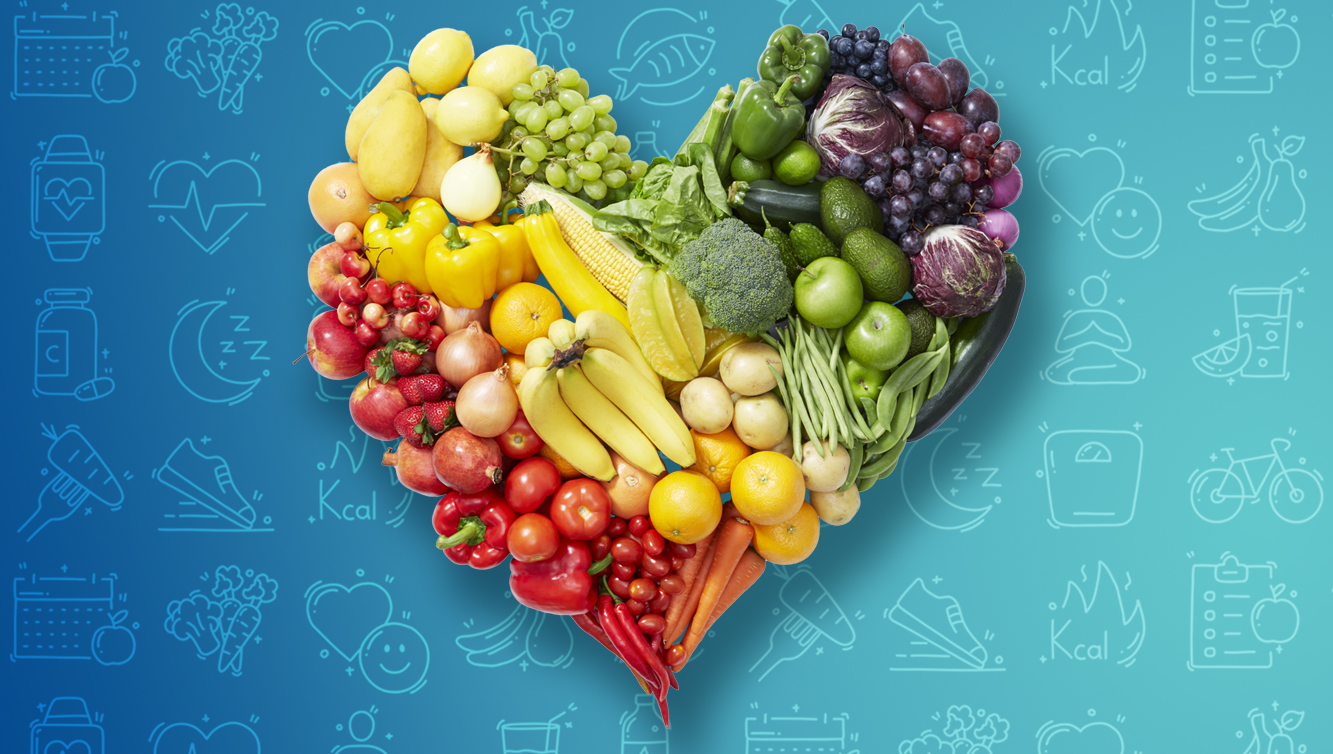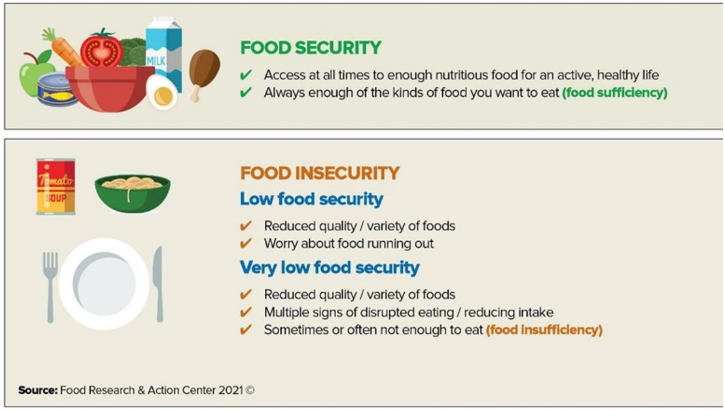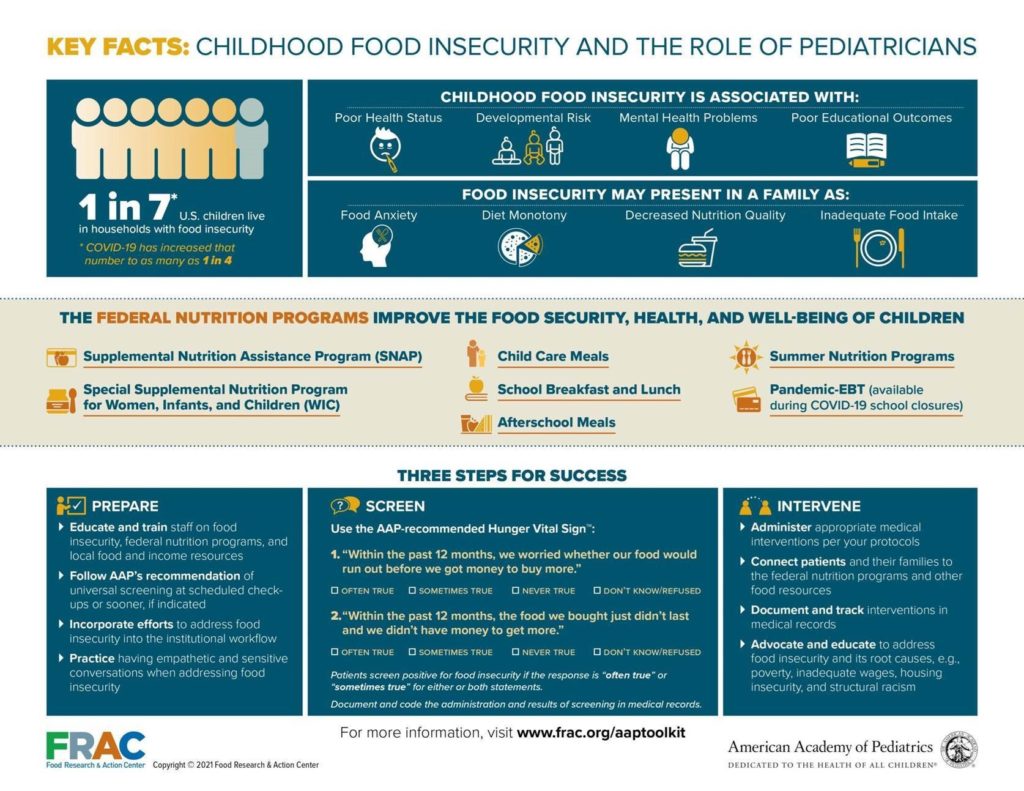Food Insecurity and the Social Drivers of Health

What is Food Insecurity?
According to the U.S. Department of Agriculture (USDA), food insecurity is a lack of consistent access to enough food for an active, healthy life. Hunger and food insecurity, though related, are not the same. Food insecurity is the consistent lack of access to adequate and nutritious food. Hunger describes physical reality, and food insecurity is the method of measuring it. Nationally, hunger affects children in every community.
Households that are food insecure struggle to provide enough food for everyone living there at some point during the year. Caregivers may skip meals to feed their children, or a child living in a food-insecure household might not get enough food to eat. Families may have enough to eat one month but not the next (How Many Kids in the United States Live With Hunger? | No Kid Hungry). Find out more about how food insecurity impacts children and families in your community here.
A myriad of factors can cause food insecurity, including low income, unemployment, a lack of access to affordable healthcare or housing, and discrimination based on race, ability, gender, sexuality, citizenship status, and more (What is Food Insecurity? | Feeding America).
Additionally, food insecurity is more likely to impact Black, Indigenous, and People of Color (BIPOC) communities due to systemic racism.
- Black and Latino children are more likely to face hunger than white children (USDA ERS – Household Food Security in the United States in 2022).
- Single-parent families are more likely to face hunger because they need to stretch their income further.
- Rural Communities
Gunderson C: Childhood Food Insecurity in the U.S.: Trends, Causes, and Policy Options 2014

How is Food Insecurity Connected to Health Outcomes?
Food insecurity in children can have grave consequences on their physical and mental health. Children facing hunger are more susceptible to obesity and its health consequences, have higher rates of anemia and asthma, and are more likely to have generally worse health. Children living in food-insecure households are also more likely to delay medical care and have increased emergency department use (more information here). Further, these children are more likely to have mental health disorders and social and behavioral problems than their food-secure peers (more information here). Researchers identified an increase in stress response in children due to experiences with food insecurity (more information here). Food insecurity has serious consequences on physical and mental health during development and can impact future academic success and economic security (Child Hunger in America | Feeding America). Conversely, when children have access to healthy food through federal nutrition programs or other community food programs, they have improved dietary intake, health, and learning outcomes (more information here).
What are the Social Influencers of Health and how does this relate to food insecurity?
- Social influencers of health (SIHE), or social determinants of health (SDOH), refer to the many factors that influence a child’s health, well-being, and academic achievement, many of which exist out of the control of the child and their caregivers. These factors, such as race, socioeconomic status, access to affordable housing, access to healthy food, and immigration status, can greatly affect a child’s health outcomes and future opportunities.
- SBHCs community approach can foster connections between families and specialized programs in their area.
- SBHCs: Provide array of services that may include primary care, mental health, social service, oral health, reproductive health, nutrition education, vision, and health promotion. Care may be provided to students, as well as school staff, family members, and others in the community during and after school hours, and often during the summer. The CDC Community Preventive Services Task Force recommends SBHCs in low-income communities to improve educational and health outcomes.
School-Based Health Centers (SBHCs) are able to help students overcome obstacles to achievement, social-emotional development, and well-being, mitigating the impacts of SIHE/SDOH on long-term success. More information about SIHE
Resources
- USDA’s Annual Report on Household Food Insecurity
- Links of the Supplemental Nutrition Assistance Program With Food Insecurity, Poverty, and Health: Evidence and Potential American Journal of Public Health
- SNAP Is Linked with Improved Nutritional Outcomes and Lower Health Care Costs Center for Budget and Policy Priorities
- Bipartisan Policy Commission: Leveraging Federal Nutrition Programs to Improve Health (see align Medicaid and SNAP)
- Role of Federal Child Nutrition Programs in Improving Health and Well Being FRAC
- Role of SNAP in Improving Health and Well being FRAC
- Hunger, Poverty, and Health Disparities During COVID-19 and the Federal Nutrition Programs’ Role in an Equitable Recovery FRAC
- Food Insecurity and Health: Practices and Policies to Address Food Insecurity among Children Academic Pediatrics
- Reduced Administrative Burden for SNAP Details variations across states in the gap between eligible and enrolled families with children, as well as state level policies that can improve uptake.
- SIREN (Social Interventions Research & Evaluation network) newsletter provides monthly newsletters with a run down of all current research related to SDoH and healthcare interventions. They also have a searchable research datab






